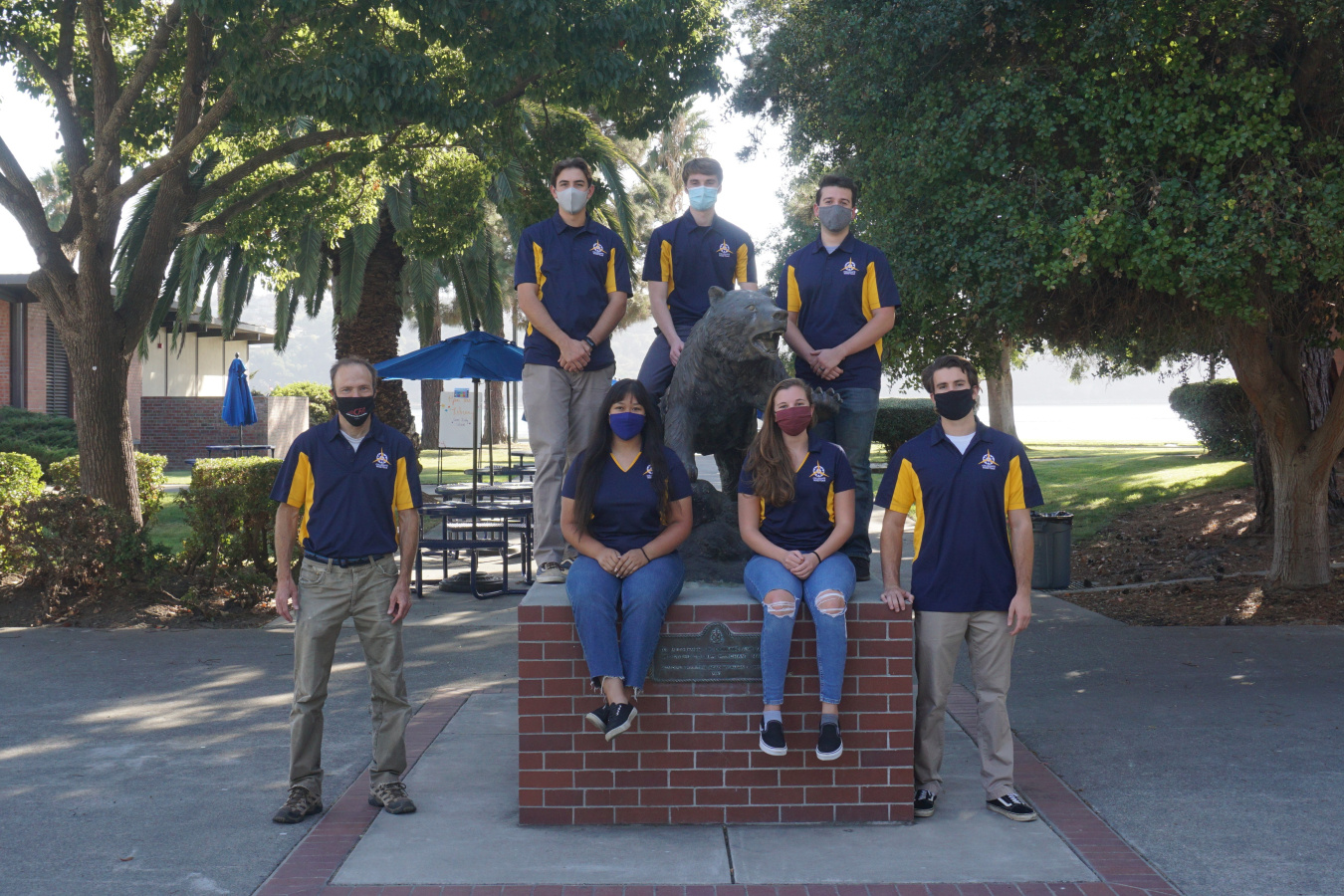Team Name:
The Cal Maritime Team
California State University Maritime Academy, Vallejo, California
Why this Competition?
The Cal Maritime Team has participated in the U.S. Department of Energy Collegiate Wind Competition for many years. One of the best aspects of participating in the Collegiate Wind Competition is learning about the wind and renewable energy industry. Another reason for being in this competition is the experience of working as a team to meet a common goal. The Cal Maritime Team provides an opportunity for members to gain experience in the field of wind energy, which has tremendous potential and a promising job market.
Game Plan
We are working hard to make sure we finish strong, as we have consistently in the past. In this competition, the turbine design team will design and manufacture a wind turbine that will be tested for performance and safety. The design includes a three-blade, variable-pitch rotor system, a self-manufactured generator, and a constant resistive load.

The Cal Maritime Team
The project development team will work to create a comprehensive 12-page plan that will detail how our wind farm will be paid for and articulate environmental mitigation processes to ensure the farm complies with state and federal policies. The project development team will use Wind Operator to analyze wind output in general areas and the Energy Information Administration website to locate preexisting infrastructure. The team recently got access to OpenWind, which will allow a more accurate analysis of wind output in the region we select for our site plan.
Team Strengths
Our team possesses a strong team history, commitment from every team member, and curiosity about the project and competition. These qualities drive us to succeed as a team. Another advantage is an on-site wind tunnel built by a previous Cal Maritime Team, which makes it convenient to test our turbine design. Our team members come from a broad range of academic backgrounds—particularly the project development team, which consists of Global Studies, Maritime Affairs, International Business, and Logistics majors. Finally, the team looks up to our faculty advisor, Ryan Storz, who enjoys sharing his prolific knowledge of the energy sector.
Team Hurdles
Challenges we face include our smaller team size compared to other universities and assembling competition deliverables with limited in-person interaction.
The disruption caused by the coronavirus pandemic over the past year poses several challenges to our team. The turbine design team is on campus but cannot easily meet in person, and we have done a lot of manufacturing in our dorm rooms. However, we have still been able to manufacture our preliminary design of a generator, a variable-pitch system, and a set of blades using 3D-printing methods.
This year has looked different for the project development team as well. All meetings have remained virtual, which made it difficult to schedule meeting times. However, once orchestrated, the team set up a weekly Zoom call and has met consistently. Establishing regular communication will help us all work together efficiently and reach our goals.
Competition Objectives
As always, one of our team’s goals is to do well in the competition. Our team is very competitive, and we want to showcase the hard work we have done. All in all, we are participating in this competition not only to challenge ourselves but also to learn about wind energy and connect with career opportunities in the industry.
Follow Us
Facebook: @csumaritimeacademy
Instagram: @CalMaritimeWindTeam | @calmaritime
LinkedIn: California State University Maritime Academy
Twitter: @Cal_Maritime
This content was submitted to the U.S. Department of Energy by the team.

